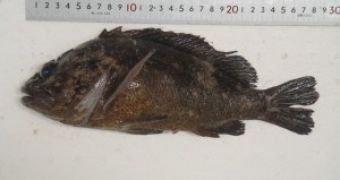Despite the fact that most people are well aware of how the Fukushima nuclear disaster caused tremendous damage to the environment and to marine wildlife, the discovery of a fish whose body contains as much as 2540 times the legal limit for radiation is bound to cause quite a stir.
The highly contaminated fish was found by researchers in the waters close to the Fukushima nuclear power plant.
Judging just by its looks, nobody would have suspected that the cesium concentration in its tissues was one of 254,000 becquerels per kilogram.
Thus, the fish displayed no physical abnormalities, meaning that its appearance was fairly similar to that of other specimens belonging to this species.
However, as tests carried out after the fish was caught have shown, Mike the murasoi, as this sea creature was named by the people who found it, might in fact set a new record in terms of seafood radiation levels.
According to Japan Daily Press, the fish was caught by researchers working with Tepco (i.e. Tokyo Electric Power Co.), whose spokespersons did not shy away from admitting that the levels of contamination recorded near the now closed Fukushima nuclear plant were still extremely high.
However, most of the investigations carried out thus far only succeeded in finding various sea creatures whose levels of radiation were “merely” 134-137 above the legal limit.
Because of this, Mike the murasoi's discovery sparked quite a controversy.
Specialists explain that, in order for a fish to end up being contaminated by radiation to such an extent, it is necessary for it to spend a considerable amount of time swimming around in the shallow reefs located in the plant's proximity.
Rumor has it that, following Mike's discovery, nets will be set up at a distance of 20 kilometers (about 12.5 miles) away from the coastline. Their purpose will be that of keeping such contaminated fish from migrating to other areas.

 14 DAY TRIAL //
14 DAY TRIAL //